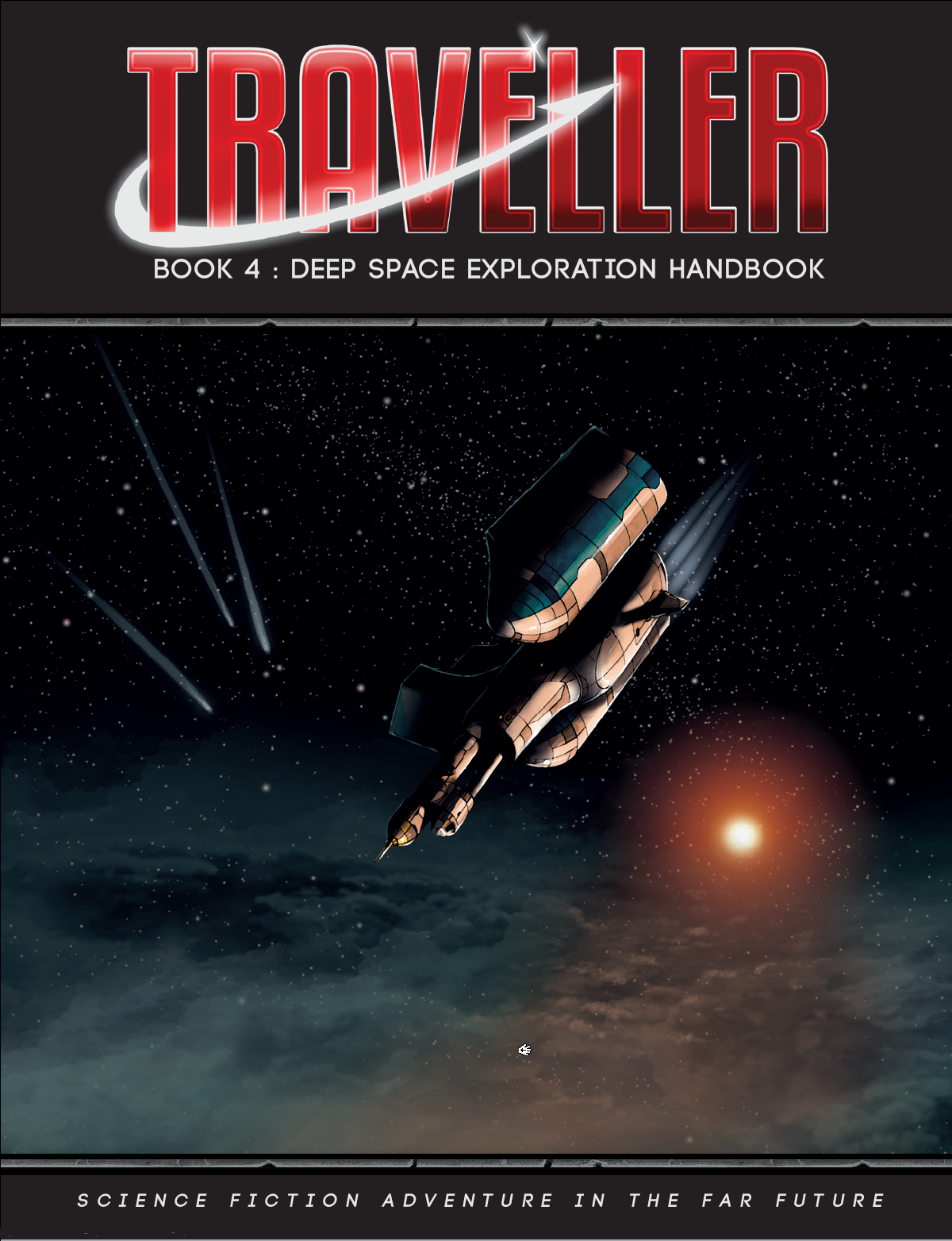Mongoose Traveller 2nd Edition: Deep Space Exploration Handbook
This article originally appeared in the September/October 2018 issue.
 Deep
Space Exploration Handbook. Martin J. Dougherty
Deep
Space Exploration Handbook. Martin J. Dougherty
Mongoose Publishing https://www.mongoosepublishing.com
49pp., PDF (softcover forthcoming)
Price TBD (see note)
Reviewer’s Note: This volume was part of the Great Rift Kickstarter, and the was received as part of the deliverables. The softcover will be delivered when ready.
Exploration campaigns have seemingly always been something of a stepchild in Traveller, with only a basic set of rules tacked on. That changes with the release of the Great Rift Book 4: Deep Space Exploration Handbook. Although delivered as part of the Great Rift set, its utility extends far beyond the Rift, to any exploration campaign, in any setting.
This volume is divided into two very distinct parts. The first part, five chapters, is more-or-less the meat-and-potatos for (stellar) system engineering gearheads.
After a brief introduction, summarizing why sophonts explore, Chapter One describes the process of Deep Space Exploration, and introduces the concept of the Survey Index, which tells you roughly how much information you have about your exploration target. The different levels of survey are described in order, starting with the simple identification of a target to be explored, and ranging through information gathering from secondary sources (e.g., old star maps, databases, etc.) and extremely long-range sensors, to sensor sweeps on ‘fly-by’ missions, to increasingly more detailed surveys as more specific targets are identified and more detailed information is acquired. Task checks for conducting each type of survey are provided, and the effect of the checks affects the survey index for the target.
Chapter Two looks at stars and related stellar objects, and discusses starship operations in the vicinity of such objects. In most cases, getting too close means you’re in serious trouble—but with this volume, at least you’ll know why. There is also good supporting information about stellar classification, and the 100-diameter distance from stars of various types.
Chapter Three looks at substellar objects, such as planets, comets, gas and dust clouds, and so on. The focus here is on rules for detection, which are uncomplicated.
Chapter Four is a set of expanded rules for system generation. Rather than starting with a mainworld UWP, you generate the system from the star(s) outward. Not all resulting systems are necessarily habitable, and you can even end up with a system in which the primary is a black hole. Other exceptional aspects are also possible, such as retrograde orbits, or placement in one of the trojan positions. The end result is a system with as much detail as you want.
While the rest of the first part of this book requires only the Core Rules, Chapter Five calls on the reader to have High Guard or an equivalent, as it is a “catalog supplement” for the Spacecraft Options chapter therein. Deep Space Exploration has needs of its own beyond what you might want in the well-settled core, or even the somewhat-settled-and-rough-around-the-edges frontier. This chapter describes the modules that meet those special needs.
The second part gets its own “cover”, and its half of this book is Jayne’s Guide to Starships of Exploration. This section is essentially a catalog of starships and spacecraft, with stat sheets, prose descriptions, and standard isometric color deckplans. Vessel sizes range from 60 to 1500 tons displacement, and not all of them represent “perfect” craft for the jobs described.
Artwork is pretty much what we’ve come to expect with Second Edition Traveller, but I could really like good old monochrome top-down line drawings as plans instead of the new standard of color isometric with “3D” representations of equipment that can occasionally block what’s behind it; the plain plans are ultimately easier to read and get a “feel” for, as well as more easily used for miniatures play.
An excellent companion to the rest of the Great Rift set, and worthwhile on its own even if you don’t have the rest of the Great Rift. Skip lunch and grab this.
 Freelance
Traveller
Freelance
Traveller